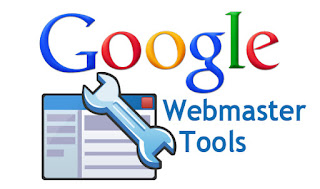Make full use of Google webmasters tools
For those of you who have a website of your own and have not made use of the Google webmaster tools, let me tell you that you have doomed your website to oblivion as far as the search engines are concerned. If you are not getting any traffic to your website, it is possibly because you have not made use of the best SEO tool out there on the web. Before you start to dish out loads of hard earned money on SEO companies, I would advise you to get yourself acquainted with it now and that's what this article will focus on.
Google webmasters tools in itself is a very complicated in the sense, there are too many variables to deal within the whole webmasters toolbox. I shall only hover over the most important and required aspects of using the webmasters tools so as to zone in on the crucial search engine optimizing nature of it rather than the whole website in detail.
Setup an account - Now!
Firstly, if you do not have a Google account, I would advise you to create one and the log in to the Google webmaster tool website. And assuming that it is the first time you are logging into the site, you will be required to add your site. Once you have added your website to the webmasters account, you will be able to see a screenshot of your index page at the very center of webmasters tools. It may take up to a fortnight before you could see a screenshot of your website but you can begin using the tools at your disposal right away. You will also be required to verify that the website belongs to you. This can be done by clicking on the manage site to the right of your website and clicking on verify. I would recommend uploading an HTML file to your domain root folder and clicking on verify. I have found this the most effective and the easiest way to verify your site.
Add a sitemap - submit your URL's to Google
Click on your website to access the Google webmasters tools dashboard. You could first start off by adding a sitemap in xml format. This can be achieved by various means e.g. even some third party websites provide the service of creating a sitemap for you. Or you could look up how to create a sitemap in Google if you fancy your chances of creating it yourself. Once that is out of the way, you could check to see if your pages have been indexed by Google. Remember Google may index only the pages it sees as providing valuable user experience and overlook the rest.
Though you also have the option of manually submitting the website pages and URL links by using the 'fetch as googlebot', I strongly recommend that you use the sitemap submission for better results. This way, googlebot will know exactly how to maneuver through your website to reach certain pages.
Check for site errors and correct them
Next on the dashboard, I would advise you to check the crawl errors under the health tab. This should be done on a very regular basis, since an unhealthy website is seen as a non-functioning website and thereby overlooked by most search robots, including googlebot. Check to see if your website has returned any URL errors on the last googlebot crawl. If so have them fixed. Craawl errors section usually mentions site errors, which include robot.txt error in case you have not uploaded a robot.txt file to your server already. Under the URL errors, you mainly find the access denied, not found and not followed. To fix these errors, you could go to dashboard>Optimization>Remove URL> and create a new URL removal request. Once submitted, you could go back to the crawl errors that you have rectified and mark them as fixed. Be sure to visit the crawl error page regularly to make sure that your website stays healthy.
HTML improvements and Meta tags
Another tool in the optimization tab is the HTML improvements. This will inadvertently suggest any html improvements that your website may require. This will include the Meta title tags, the description tags, and the keyword tags but not limited to them. It is pretty basic and the improvements can be done by yourself if you have a bit of html knowledge yourself, or you could have your website designer or developer look after these to further improve your websites chances in the overall look and feel for the googlebot.
Though there are many other features included in the Google webmasters tools website that you could use to optimize it for search engines, if you have started off with the basics, I am sure your website will stay healthy and may get you the traffic that you deserve. These are the very basics that you need to be aware of and practice in order for your website to stand a chance of showing up in search engines.





Comments
Post a Comment